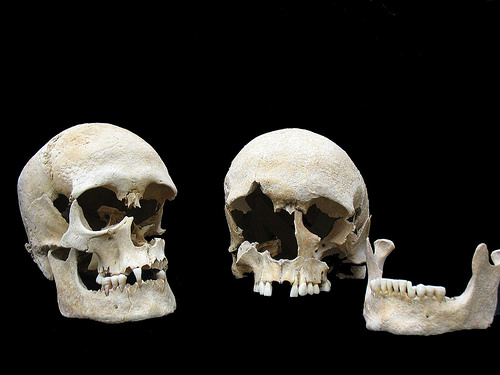
MOLECULAR BIOLOGY AND EVOLUTION (OXFORD UNIVERSITY PRESS)—Before the infamous Black Death, the first great plague epidemic was the Justinian plague, which, over the course of two centuries, wiped out up to an estimated 50 million (15 percent) of the world’s population throughout the Byzantine Empire—and may have helped speed the decline of the eastern Roman Empire.
No one knows why it disappeared.
Recent molecular clues from ancient plague victims have suggested that plague may have been caused by the same bacterium, Yersinia pestis, which was responsible for the Black Death. But the geographic reach, mortality and impact of the Justinian pandemic are not fully known.
Both information from ancient hosts and bacteria could shed light on the role of plague, which has afflicted mankind for more than 5,000 years.
Now, scientists based in Germany, including Michal Feldman, Johannes Krause, Michaela Harbeck and colleagues have confirmed this by recovering the bacterial culprit from sixth century skeletons found in Altenerding, an ancient southern German burial site near Munich. The Altenerding genome dates back to the beginning of the plague.
They have generated the first high-coverage genome of the bacterial agent responsible for the Justinian plague. In addition to revealing new insights in the molecular evolution of Yersinia pestis since the Byzantine times, the new sequence shows features that could not detected due to the limitations in the coverage of a draft genome previously reported by Wagner*, including 30 newly identified mutations and structural rearrangements unique to the Justinianic strain., as well as correcting 19 false positive mutations.
“The fact that the archeological skeletons which gave these exciting insights were excavated over 50 years ago underscores the importance of maintaining well curated anthropological collections,” said author Michaela Harbeck. “We were very fortunate to find another plague victim with very good DNA preservation in a graveyard just a few kilometers from where the individual analyzed in Wagner et al. was found. It provided us with the great opportunity to reconstruct the first high quality genome in addition to the previously published draft genome.”
Three are located in genes critical to plague virulence: nrdE, fadJ and pcp genes. Their data also suggested that the strain was more genetically diverse than previously thought. How and why the pathogen reached Germany remains a mystery.
____________________________________
Skulls of both plague victims buried together in one grave at the Altenerding cemetery. Right: Individual 1175 (female, 25-30 years old) left: individual 1176, (male, 20 to 25 years old). The Yersinia pestis genome was extracted from individual 1175. Credit: State Collection of Anthropology and Palaeoanatomy Munich
______________________________________
These new findings allow the authors to develop guidelines that could help improve the quality and authenticity of genomic data recovered from candidate ancient pathogens. And with plague classified as a re-emerging infectious disease in certain regions, an important historic, high-quality reference resource has been generated to offer insights into key the evolutionary changes, adaptation and human impact of plague.
“Our research confirms that the Justinianic plague reached far beyond the historically documented affected region and provides new insights into the evolutionary history of Yersinia pestis, illustrating the potential of ancient genomic reconstructions to broaden our understanding of pathogen evolution and of historical events,” said research colleague Michal Feldman. “Our reanalysis of previous datasets stresses the importance of following strict criteria to avoid errors in the reconstruction of ancient pathogen genomes.”
Source: Oxford University Press news release.
___________________________________________________

______________________________________________
Travel and learn with Far Horizons.
____________________________________________
This richly illustrated issue includes the following stories: Recent findings shedding new light on the whereabouts of the remains of Philip of Macedon, father of Alexander the Great; how an archaeologist-sculptor is bringing bones of the dead back to life; archaeologists uncovering town life at the dawn of civilization; an exclusive interview with internationally acclaimed archaeologist James M. Adovasio about what makes the Meadowcroft Rockshelter prominent in the ongoing search for the first Americans; what archaeologists are finding at the site of the ancient city of Gath, the home town of the biblical Philistine giant, Goliath; and how scientists are redrawing the picture of human evolution in Europe. Find it on Amazon.com.






